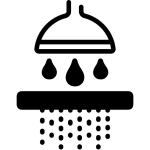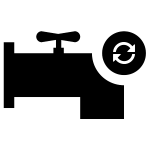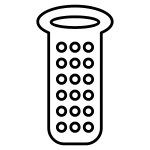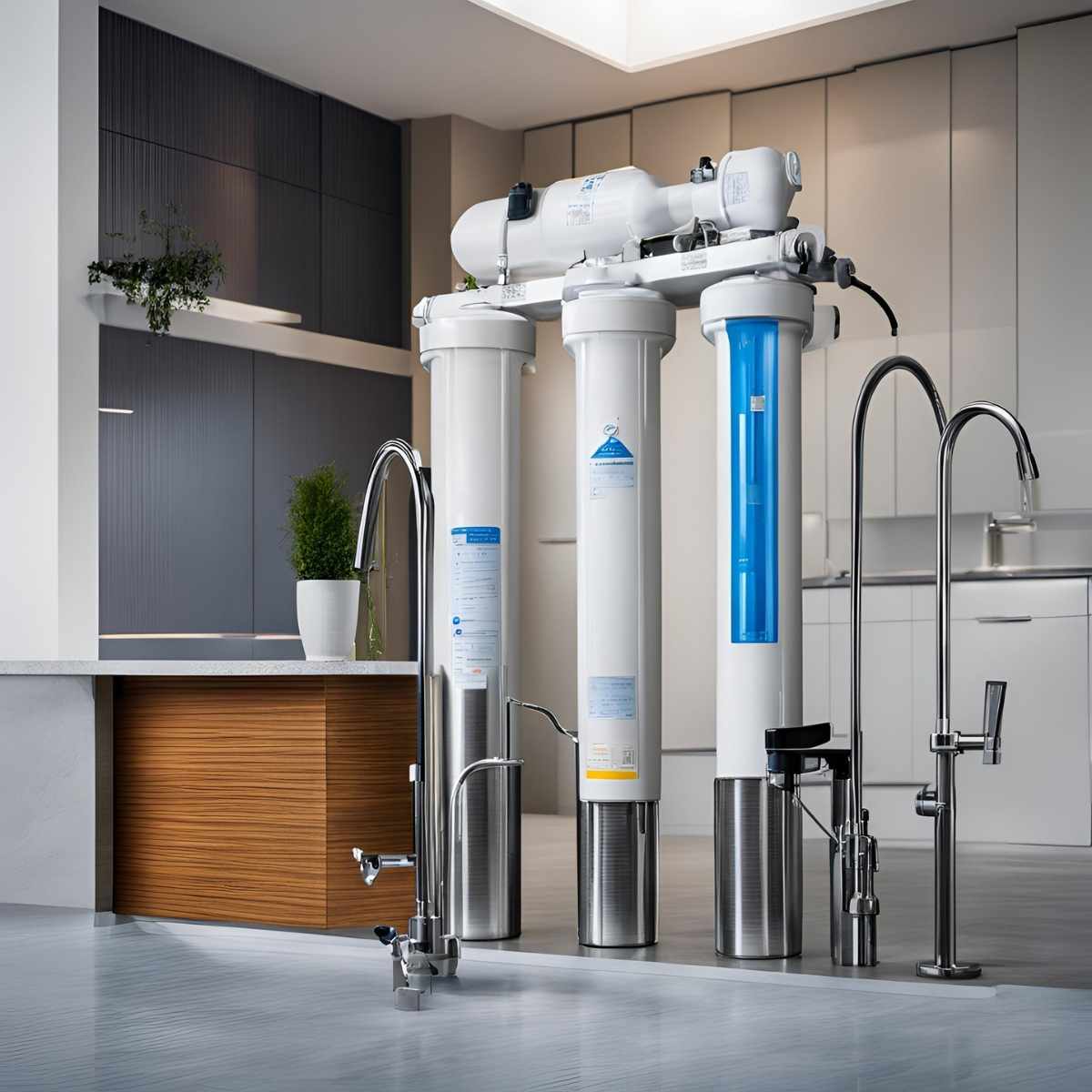Sodium is a naturally occurring element found in many water sources across the globe. While it’s essential for our health in small amounts, excess sodium in drinking water can pose significant health risks—especially for those with high blood pressure, heart conditions, or on a low-sodium diet. This raises a crucial question for many homeowners and health-conscious individuals: what water filter removes sodium?
At Cuoll, we understand the importance of clean, healthy water for your home and family. That’s why we’ve put together this comprehensive guide to help you understand how to remove sodium from your water, which filters work, and why it matters. Let’s dive into the facts.
Table of Contents
- Why Is Sodium in Your Water?
- Is Sodium in Water Harmful?
- Common Sources of Sodium in Water
- Which Water Filter Removes Sodium?
- Reverse Osmosis: The Best Solution
- Other Technologies That Reduce Sodium
- What Water Filters Don’t Remove Sodium?
- Top Reverse Osmosis Systems in 2025
- Should You Remove Sodium from All Household Water?
- How to Test for Sodium in Your Water
- Final Thoughts
Why Is Sodium in Your Water?
Sodium can get into your water supply in a variety of ways:
- Natural mineral deposits in underground aquifers.
- Water softeners, which often use sodium chloride to replace calcium and magnesium.
- Saltwater intrusion in coastal areas.
- Agricultural runoff, particularly from fertilizers and livestock farms.
- Industrial pollution and wastewater.
Even municipal water supplies may contain measurable levels of sodium. According to the Environmental Protection Agency (EPA), public water systems aren’t required to regulate sodium levels unless specifically requested by a local health department. That means many people are drinking sodium without even knowing it.
Is Sodium in Water Harmful?
For most healthy individuals, low to moderate amounts of sodium in water may not be harmful. However, excess sodium intake through water and food combined can be problematic. Here are the groups most at risk:
- People with hypertension or high blood pressure
- Individuals with heart disease
- People on a low-sodium diet
- Infants or elderly individuals with compromised kidney function
The U.S. Environmental Protection Agency suggests that sodium levels in drinking water should not exceed 20 mg/L for those on a sodium-restricted diet. Yet some sources, especially those using water softeners, may exceed this threshold significantly.
Common Sources of Sodium in Water
Here are the most frequent culprits of sodium in your tap water:
| Source | Sodium Contribution |
|---|---|
| Water softeners | High |
| Natural underground sources | Moderate |
| Saltwater intrusion | High |
| Municipal water | Low to Moderate |
| Agricultural runoff | Variable |
Which Water Filter Removes Sodium?
Now for the question you came here for: what water filter removes sodium? Not all filtration systems are created equal. The most effective method for sodium removal is reverse osmosis (RO).
Let’s break down the options:
| Water Filter Type | Removes Sodium? | Efficiency |
|---|---|---|
| Reverse Osmosis | ✅ Yes | 95–98% |
| Activated Carbon | ❌ No | 0% |
| Sediment Filters | ❌ No | 0% |
| Ion Exchange (Softener) | ❌ Adds Sodium | N/A |
| Distillation | ✅ Yes | 95–99% |
| Deionization | ✅ Yes (Limited) | Varies |
Reverse Osmosis: The Best Solution
Reverse Osmosis (RO) is the gold standard for removing sodium from drinking water. It works by forcing water through a semi-permeable membrane that blocks sodium ions and other dissolved salts.
Benefits of Reverse Osmosis:
- Removes up to 98% of sodium
- Also filters out chlorine, fluoride, nitrates, lead, arsenic, and more
- Improves taste and odor
- Easy to install under your sink or in a whole-home system
At Cuoll, we offer high-performance RO systems that are easy to maintain and built to last. Our RO units come with multi-stage filters, pressure tanks, and optional UV sterilization for the purest water possible.
Other Technologies That Reduce Sodium
While RO is the most effective, other methods like distillation and deionization can also help reduce sodium in water.
1. Distillation Systems
Distillers boil water and then condense the steam into a clean container, leaving sodium and other impurities behind. It’s highly effective but slow and energy-intensive.
2. Deionization (DI) Systems
DI systems remove ions, including sodium, using ion-exchange resins. While effective in lab or industrial settings, DI is less practical and more expensive for home use.
What Water Filters Don’t Remove Sodium?
Many people buy common water filters thinking they’ll solve all their problems. Unfortunately, most off-the-shelf water filters (like pitcher filters and faucet filters) don’t remove sodium.
Filters that DO NOT remove sodium:
- Brita or PUR pitchers
- Carbon block filters
- Basic inline fridge filters
- Ceramic filters
These systems are great for chlorine, bad taste, and sediment, but they won’t touch dissolved salts like sodium.
Top Reverse Osmosis Systems in 2025
If you’re serious about sodium removal, here are some of the best reverse osmosis systems available this year:
1. Cuoll UltraPure RO System
- 5-stage filtration with 98% sodium reduction
- UV sterilizer for bacteria-free water
- Smart indicator for filter change
- Ideal for kitchen use
2. iSpring RCC7AK
- 6-stage system with mineralizer
- Removes sodium and adds healthy minerals
- NSF certified components
3. APEC ROES-50
- Top-rated budget option
- Removes up to 99% of contaminants
- Durable and reliable
4. Waterdrop G3P800 Tankless RO
- High flow rate and compact design
- Smart display and leak detection
- Energy-saving technology
Each of these systems can dramatically reduce sodium levels in your water and are available on Cuoll.com with free shipping options.
Should You Remove Sodium from All Household Water?
It depends on your goals. For drinking and cooking, sodium removal is essential if you’re health-conscious. However, removing sodium from all household water (for bathing, laundry, etc.) may not be necessary unless you have sensitive skin or live in a high-sodium area.
For whole-home solutions, consider installing an RO system at the point of entry or combining a whole-house carbon filter with a reverse osmosis unit at the kitchen tap.
How to Test for Sodium in Your Water
Before buying a filter, you should test your water. Here’s how:
1. Request a Water Report
Contact your local water supplier and ask for a Consumer Confidence Report (CCR).
2. Use a Home Test Kit
Sodium-specific test kits are available online and are relatively easy to use.
3. Send to a Lab
For the most accurate results, send a sample to a certified lab and request a sodium concentration analysis.
Once you know your sodium levels, you can better determine what filtration solution you need.
Final Thoughts
Sodium might be invisible and tasteless in water—but its impact on your health is very real. Fortunately, with the right knowledge and tools, you can protect yourself and your family from excessive sodium intake.
If you’re wondering what water filter removes sodium, the answer is clear: Reverse Osmosis is your best bet. And here at Cuoll, we offer a range of advanced RO systems, water purifiers, and filtration solutions to fit every budget and need.
Ready to take control of your water quality?
👉 Explore Cuoll’s top-rated water filtration systems and find the perfect solution for your home today.
Frequently Asked Questions (FAQs)
Q1. Does boiling water remove sodium?
No, boiling water only concentrates the sodium. It does not remove it.
Q2. Do water softeners remove sodium?
No. In fact, they add sodium to your water during the ion-exchange process.
Q3. Is sodium in water the same as salt?
Not exactly. Sodium is a component of salt (sodium chloride), but in water, it may be present without chloride.
Q4. Can I use bottled water instead?
Yes, but it can be expensive and environmentally wasteful in the long run. Installing an RO system is a better long-term solution.








